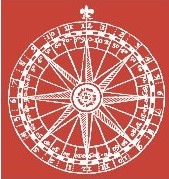Adoption, Motherhood, Domestication: The Role of the Child in Antonio Capuano’s La guerra di Mario
The long-lasting interest for the child as vehicle of social critique in Italian cinema from Neorealism to the present leads to some reflection on the film La Guerra di Mario (2005) by Neapolitan director Antonio Capuano. Capuano tackles the…
Listed in Article | publication by group Iter Community
Version 1.0 - published on 16 Oct 2025
Licensed under Creative Commons BY-NC 4.0
Description
The long-lasting interest for the child as vehicle of social critique in Italian cinema from Neorealism to the present leads to some reflection on the film La Guerra di Mario (2005) by Neapolitan director Antonio Capuano. Capuano tackles the modern theme of the failed adoption of Mario, a boy from the poor and violent neighbourhood of Naples, who grew up in a degraded environment of parental neglect, among the daily urban war of organized crime. The prospective mother, Giulia, an educated and sensitive single woman from the bourgeoisie, struggles with the problem of accepting a difficult unruly child, without falling into the trap of domestication or assimilation. The motif of domestication is embodied in various animals that accompany Mario; a stray dog, a caged bird and a snake. Integration as domestication is dangerous and destined for failure: Mario’s attempt to domesticate the stray dog leads to death, and Giulia’s failed adoption of Mario marks the impossibility of integration between the middle class and underprivileged classes.
Cite this work
Researchers should cite this work as follows:
Tags
Notes
Original publication: Bettella, Patrizia. "Adoption, Motherhood, Domestication: The Role of the Child in Antonio Capuano’s La guerra di Mario." Quaderni d'italianistica 31 (2): 2011. 149-162. DOI: 10.33137/q.i..v31i2.15039. This material has been re-published in an unmodified form on the Canadian HSS Commons with the permission of Iter Canada / Quaderni d'italianistica. Copyright © the author(s). Their work is distributed by Quaderni d'italianistica under a Creative Commons Attribution-NonCommercial 4.0 International License. For details, see https://creativecommons.org/licenses/.
Publication preview
Iter Community
This publication belongs to the Iter Community group.
When watching a publication, you will be notified when a new version is released.
